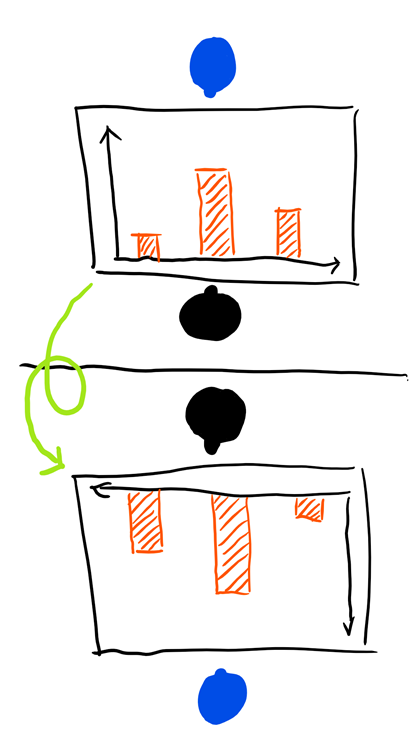mental rotation of data visualisations
| Workgroup | Knowledge Exchange |
| Duration | 03/2017 – 12/2019 |
| Funding | BMBF |
Project description
Group knowledge work at the multi touch table implies that participants view the surface from different angles. Yet, some visualisations can only be shown on the display with only one optimal point of view. The participants with suboptimal points of view are forced to mentally rotate the visualisation to understand its content (see illustration). This PhD project investigates what consequences this additional effort has and how to ease mental rotation.
The multi touch table promises to support group work in giving all members the same access to the same information. In certain situations like in the usage of diagrams, however, this equal access cannot be guaranteed since most diagrams have an optimal point of view that allows the best access to their information. Participants who don’t have this optimal point of view need to mentally rotate the visualisation and thus invest more cognitive resources to interpret its content (see illustration). These additional costs and their possible consequences in the processing and communication are the focus of this PhD project. The first goal is to show that the claim of the allocation of additional mental resources for the rotation is true for diagrams. The question here is how to construct diagrams in order to minimize these costs. Subsequently, the effects of the mental rotation process on learning and communication will be investigated.
 A suboptimal point of view on the multi touch table. Participants are forced to mentally rotate the diagram.
A suboptimal point of view on the multi touch table. Participants are forced to mentally rotate the diagram.


